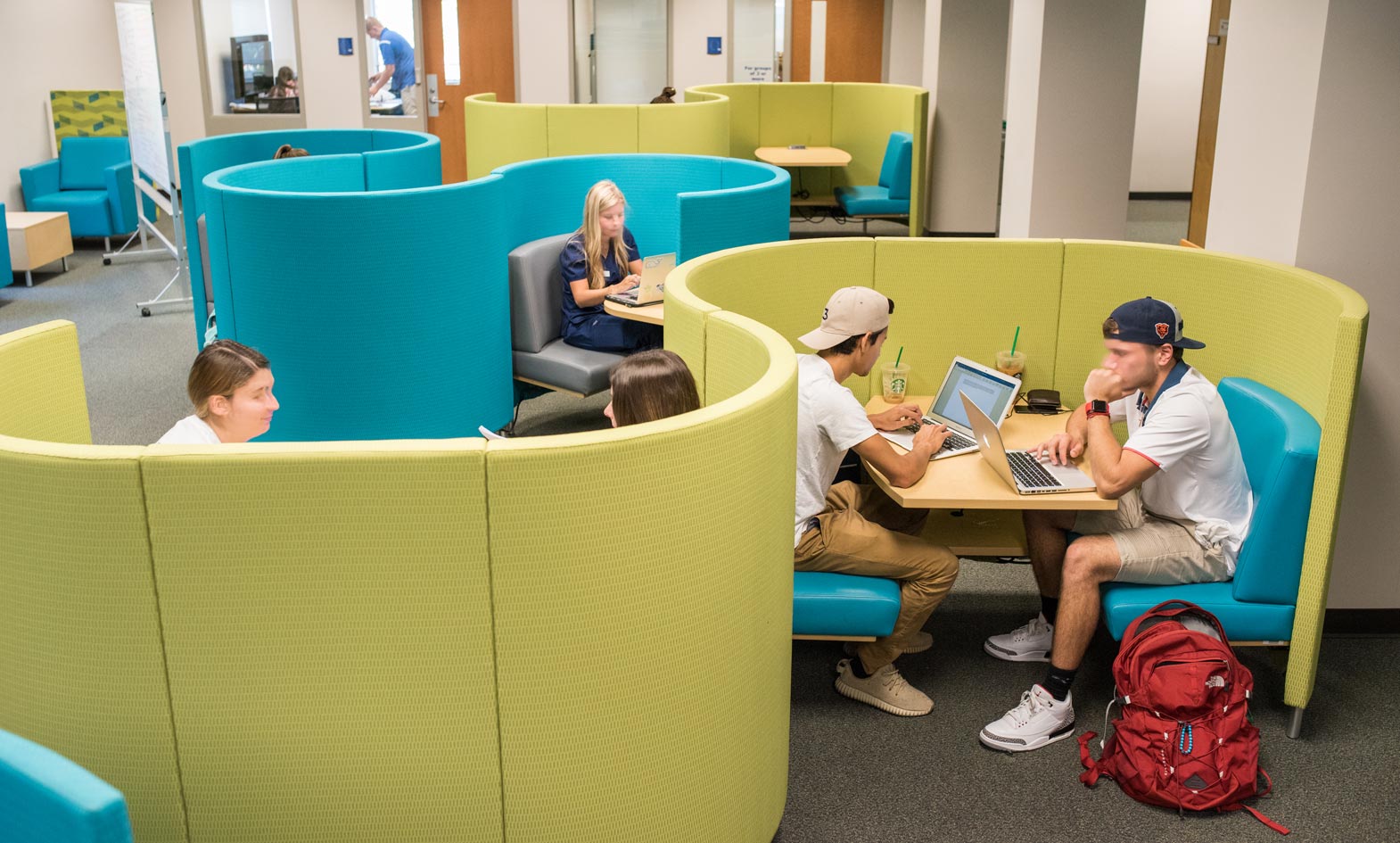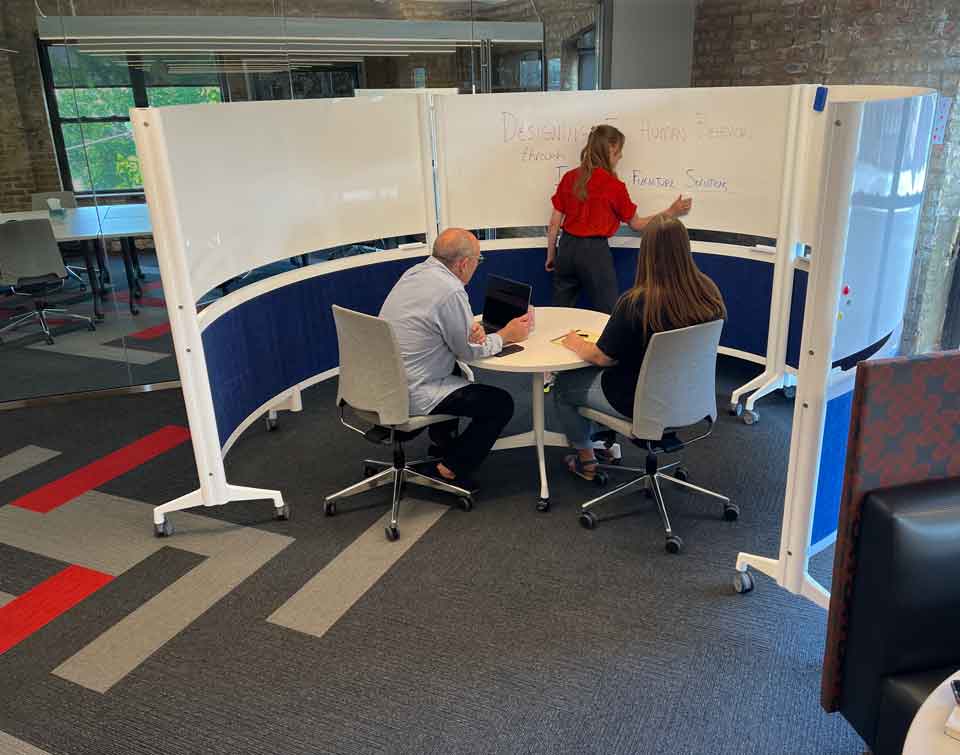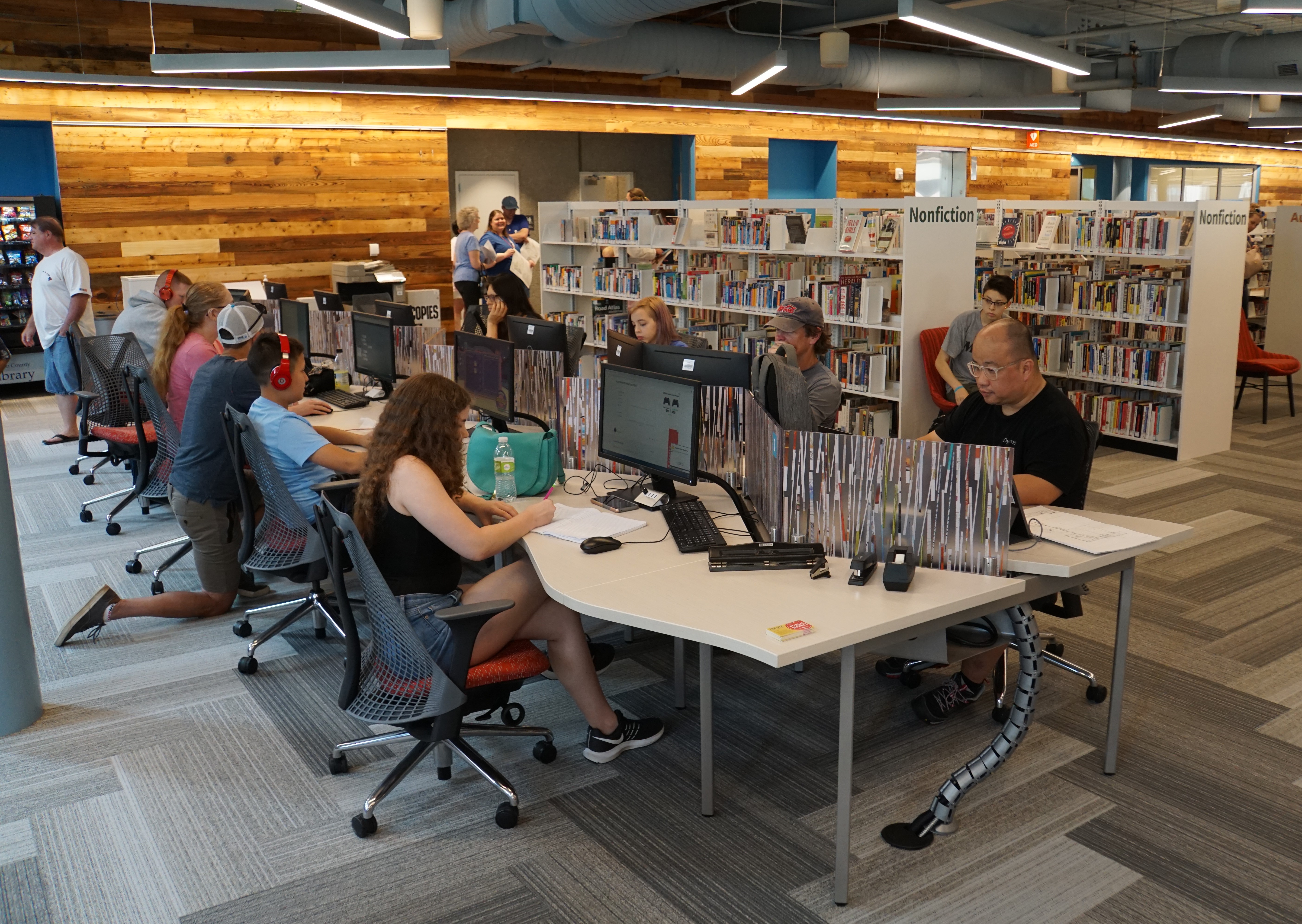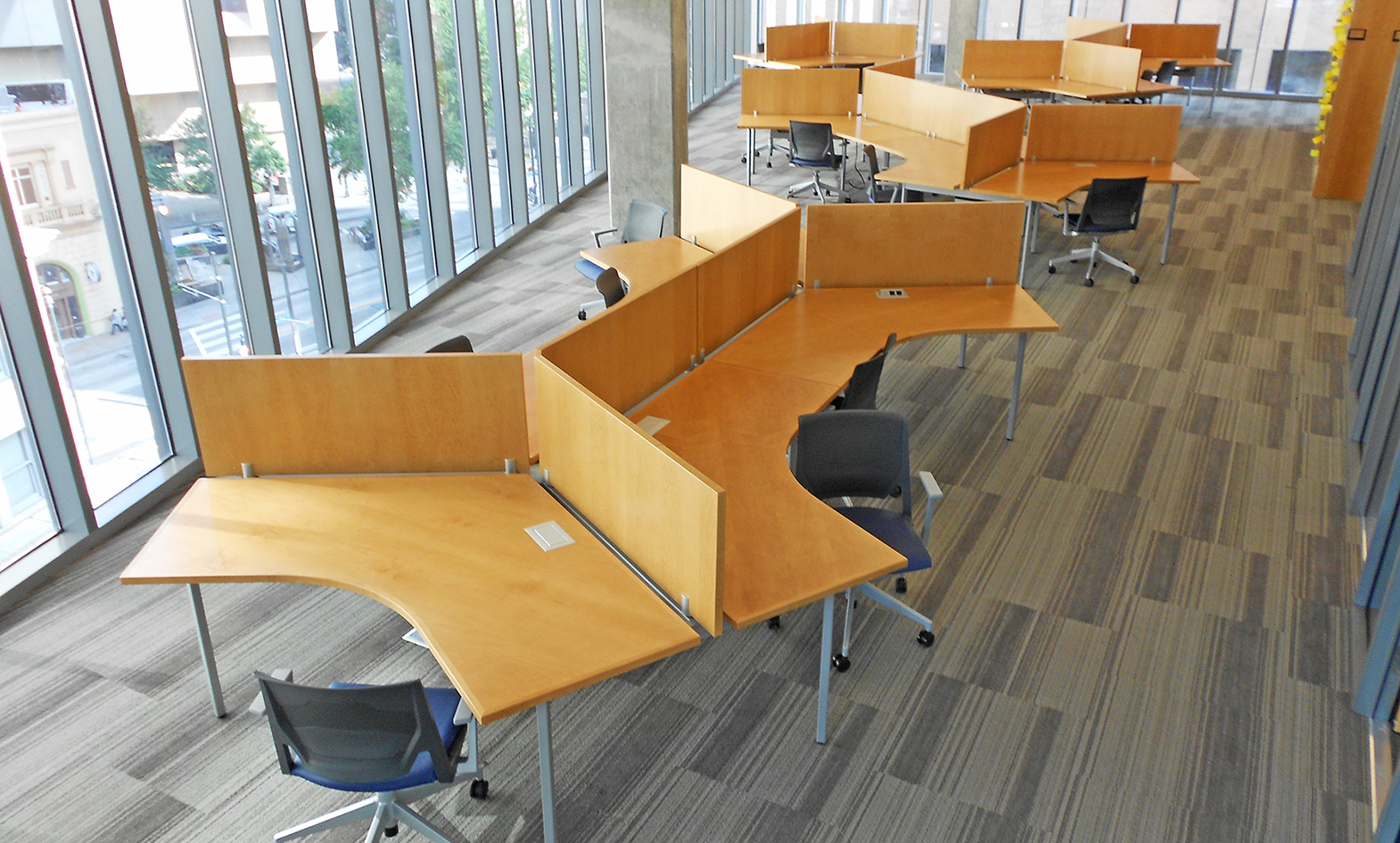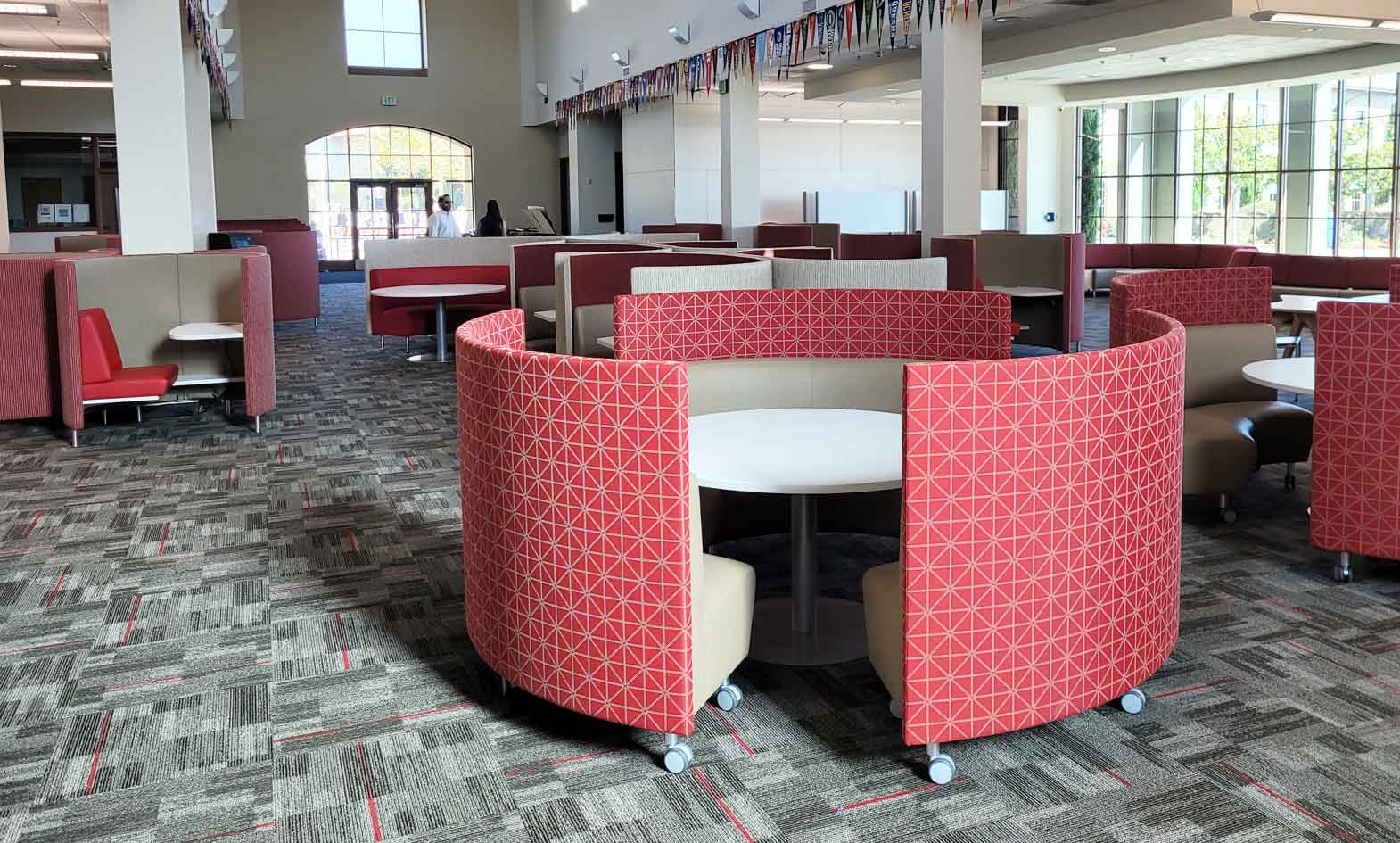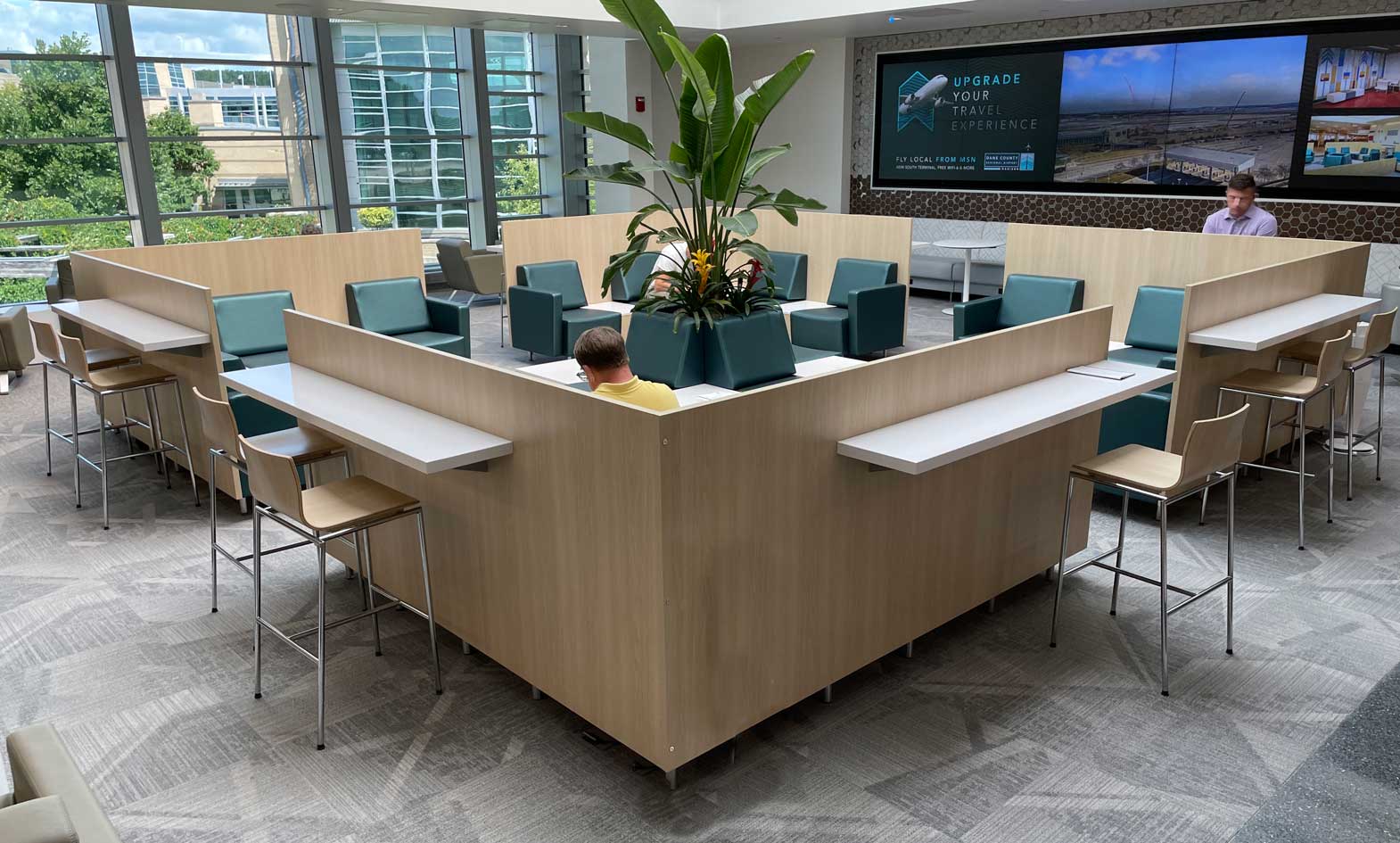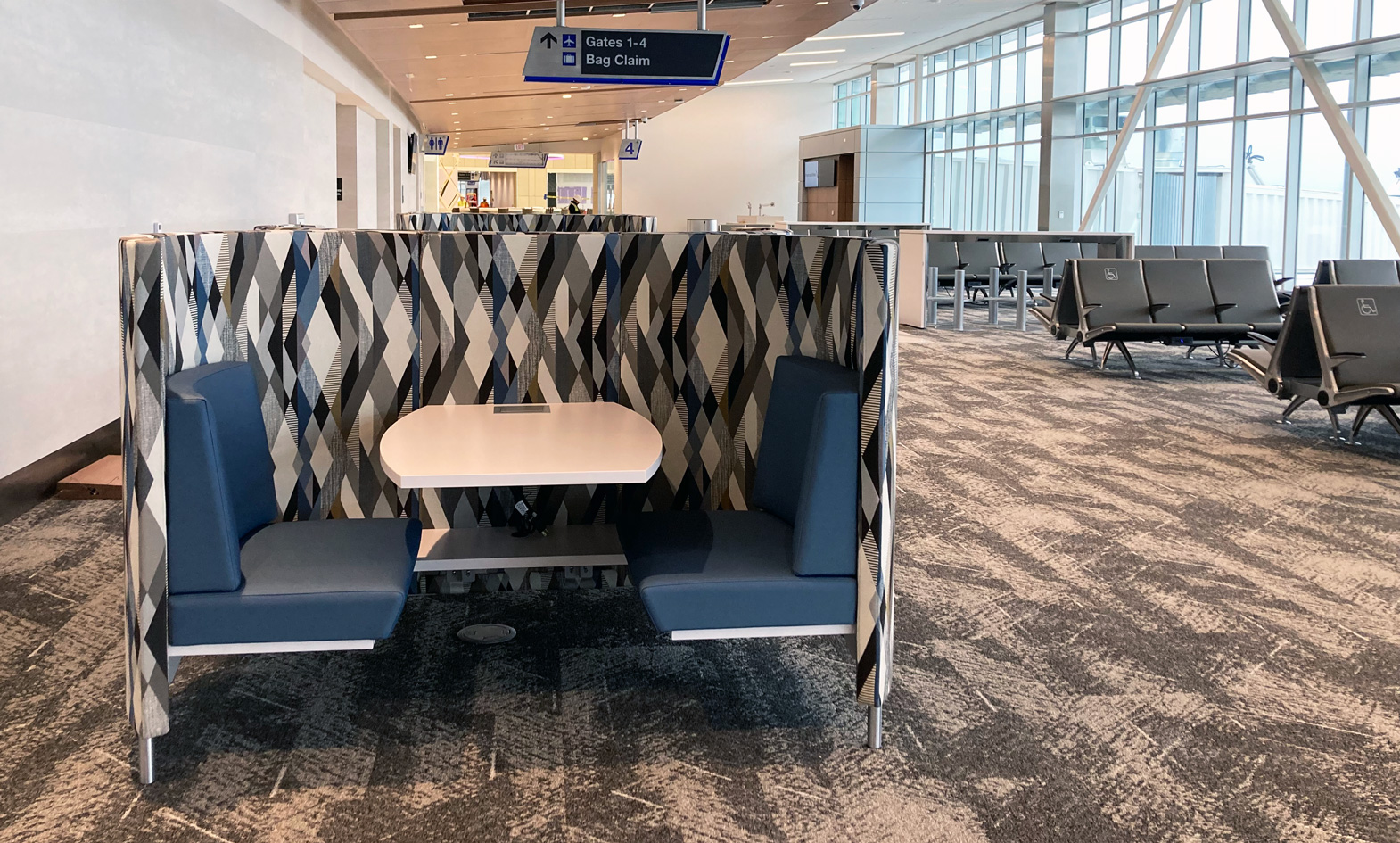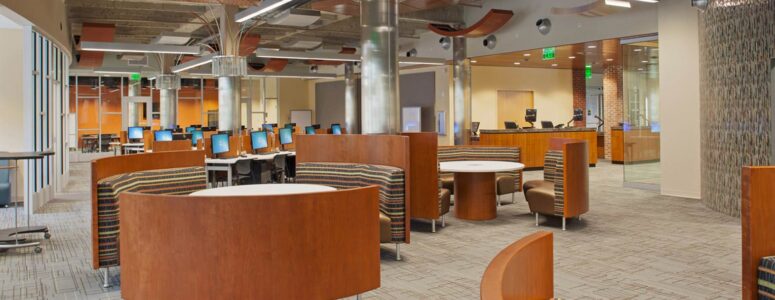
Change has been the theme for all of us over the last few years. Back in 2020, public spaces had to quickly respond to the need for socially-distanced furniture options during the pandemic and many spaces had to close down altogether.
After years of constant changes, we now are seeing a strong return to public spaces, offices, and more regular travel once again, and our spaces must adapt to meet the current needs of patrons.
At Agati, we value being on the cutting edge of innovative public spaces. That means we are always watching where real trends in human behavior are headed and creating solutions ahead of the curve to support those innate needs and behaviors from the people public spaces are supporting.
As we launch into the new year, there are a few crucial design considerations you should consider for your space in 2024:
1) A Return to Collaboration
Gone are the days of all university classes being virtual and participating in constant Zoom meetings from your kitchen table.
In college environments, students are utilizing the library more and gathering again to collaborate or work alongside one another in common spaces. But this expands beyond the university context. Throughout public spaces, there is a “togetherness” that is currently being rediscovered.
Before 2020, there was a growing trend for people to seek out individual space to work in and spaces were skewing more towards individual space options, neglecting intentional group space options. In recent months, we are seeing people search for space where they can feel more connected and gather with people they know while they work.
It’s in our human nature to want to gather with groups of people because this helps us feel comfortable and safe. We want to feel connection and belonging, even if we’re doing individual work.
Keep in mind when planning your space how to find the right balance for individual and group work patterns, and consider how different groups of people are going to work. Most group work patterns break down into three segments: Group + Tech, Group + Low / No Tech, and Social Working.
Before embarking on a project, take some time to observe the work patterns in your space to see what kind of balance you might need between these different group work patterns:
- Group + Tech: The is a very common collaboration pattern where you have people working together and they are using a centralized piece of technology like a screen or smart board.
- Group + Low / No Tech: This is a popular collaboration pattern with students where they will gather together to work and use a whiteboard or other low-tech aid to help facilitate their collaboration.
- Social Working: This “collaboration” pattern is over looked very often, but is very common. This is when people are working on individual projects in a social group. While it might not be a true collaboration, it requires space for gathering to provide opportunities for connection.
A variety of collaborative furniture options will be necessary to support one-on-one meetings, group brainstorms, and larger gatherings. Providing options like FrameWork, which can adapt and shift to meet the needs of your space on-the-fly, is an excellent example of collaborative furniture.
Other solutions to consider are the POD Duo and Manifest Benching System to provide flexible solutions for both collaborative work and individual work. The Manifest Desking System is built upon the idea of collaboration and configurability. Not only does the extension of the desk into the space between us and our neighbors make Manifest a great desking choice for individual work, but it is a collaborative furniture solution unlike any other as the extension also serves as the perfect amount of space to collaborate with a friend sitting next to you, discuss your next task, or show them a funny meme.
2) Flexibility
We saw this second trend before the turbulent years of the pandemic, but we are seeing even more of it now. And that is the need for flexibility. Whenever there are seasons that require a high level of change, we start to question the future and how it will require us to adapt.
The source of this trend is the reality that spaces are under more pressure than ever to do multiple things. To give an example, five years ago a study room could just be a study room. Today, it also might need to be an interactive learning classroom, lecture room, or even an event space all within a short time period. The massive shifts we have navigated, combined with space and budget restrictions, is making many consider how our spaces can be more flexible to adapt to changing needs.
Before beginning a new project, whether it’s a small renovation or a large building, it is wise to consider the short- and long-term flexibility you might need.
Short-term flexibility is required in spaces that need to shift and adjust on a daily or weekly basis, which might require product to be smaller in footprint or on wheels. Longer-term flexibility will be needed in spaces that might be used in one way for 6-12+ months, but might need to be reimagined as the population needs change or you learn more about what your patrons might be looking for. Product that works well for this is easy to rearrange by staff or maintenance members, and will require little to no tools to change.
The real challenge with flexibility is finding the right balance and not just jumping to the conclusion of putting everything on wheels. In our experience, about 95% of the time people regret putting everything on wheels and wish they would have asked the tougher questions upfront to determine what should be mobile and what shouldn’t be.
This truly is the Age of Flexibility, and we need to make sure that the structure of our spaces allow us to serve people well, whether we need on-the-fly adjustments or intentional spaces that can simply be used for a variety of functions.
3) Customer Experience
The final consideration for your space this year is customer experience. You might be questioning how this is a trend—shouldn’t we always care about customer experience? Haven’t we always considered this?
Since the pandemic, we have noticed across all the markets we serve that we are seeing conversations are more and more focused on how the space will truly be experienced by the person using it. Will they feel comfortable? Will they feel productive? Safe? What will make them want to return?
This is not to say that people did not have these conversations pre-pandemic, but one silver lining of going through such a difficult time is that it made us have a greater appreciation for what makes people feel comfortable in a space. It also taught us the reality that moving forward the people we serve will be more critical with where they go to find a space that makes them feel comfortable. This shift places customer experience at the forefront of all of our minds.
Moving forward, the people we serve will be more critical with where they go to find a space that makes them feel comfortable. This shift places customer experience at the forefront of all of our minds.
When starting a new project, really take the time to put yourself in the “customer’s” shoes, and think through how they are going to interact with the space, where they will want to go to feel comfortable, and what is going to make them want to come back.
Product that allows people to seek out refuge, have prospect over their environment, and that looks and feels inviting will help you create an overall positive customer experience and make people want to come back for more.
We are passionate about designing for human behavior through innovative furniture solutions. We don’t just want to respond to what’s “trendy,” but we want to understand real trends in human behavior and anticipate the ways spaces can best support their community and patrons.
As we all consider the current and future usage of our public spaces, we hope these design considerations help as you prepare your space for the rest of 2024.
Want to apply these concepts to your space? Get in touch with one of our furniture experts >>
